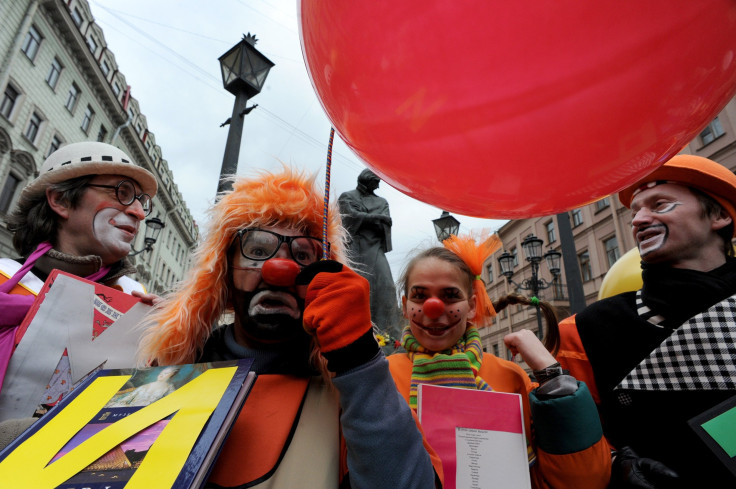April Fools’ Day 2016 Facts And History: Trivia About Why We Celebrate Pranks And Jokes On This Day

April Fools’ Day is no joke — it’s an international celebration of silliness. Every year on April 1, people around the world pull pranks on each other as spring gets under way. But why?
The origins of April Fools’ Day are nebulous, although one legend traces it to France. In the late 1500s, the French began using the Gregorian calendar, but not everybody was aware the new year date had moved. Some people kept celebrating around the vernal equinox, though, and their peers began to tease them. Thus, April Fools’ Day was born, according to the History Channel.
Traditions soon started. In France, where April Fools’ Day is called Poisson d’Avril, children first cut out fish figures on paper and stick them on the backs of other people, then run away, according to French Moments. In Portugal, revelers traditionally throw flour on each other, and in Scotland, they dispatch friends on pointless errands, as Time reported.
Following are a few other facts about April Fools’ Day, collected from CNN and the Hoax Museum:
- In the Ukrainian city of Odessa, people hold Humorina, a festival centered on April Fools’ Day. The celebration includes concerts, raffles and a parade.
- In 1983, the Associated Press published a story on the origins of April Fools’ Day. Citing Joseph Boskin, a professor emeritus of history at Boston University, AP wrote about how the celebration began during the Roman Empire when Constantine let a jester named Kugel take over for a day. Of course, Boskin was pranking the reporter, and AP now writes on its website that “false material — however intended — undermines our mission ... we would not consider someone who attempts to perpetrate an April Fools’ hoax to be a reliable source for anything in the future, April Fools’ Day or not.”
- Scotland reputedly created the popular “Kick Me” sign gag.
- In 2008, the BBC aired a news clip of penguins flying as its April Fools’ Day prank. The BBC was also behind another legendary joke when, in 1957, it showed a video about spaghetti that grew on trees.
- There’s an organization that gives out Ig Nobel Prizes for research that’s humorous — and true. “The real stuff is funnier, simply because it is real,” creator Marc Abrahams told National Geographic. “In that sense, the things that are real and funny are a superior form of April Fools’ joke, because you can tell them and people will think you are making it up.”
- Geoffrey Chaucer may have written the first-ever reference to April Fools’ Day in a 1392 poem called “The Nun’s Priest’s Tale.”
- In 1996, Taco Bell pranked newspaper readers with an advertisement indicated it had purchased the historic Liberty Bell — and planned to rename it the “Taco Liberty Bell.”
- New York advertises a fake April Fools’ Day parade on its website every year. This year’s advertisement reads, in part: “The Grand Marshall will be North Korean President Kim Jong Un dressed as the Pied Piper straddling his Ballistic Missile Float. He will be leading his faithful comrades, who will be goose-stepping and singing Ray Whitley and The Tams’ 1963 hit ‘What Kind of Fool Do You Think I Am?’ Color commentary will be provided by Kanye West, who will be live-tweeting the parade from his Infinity Mirror Float.”
© Copyright IBTimes 2024. All rights reserved.












